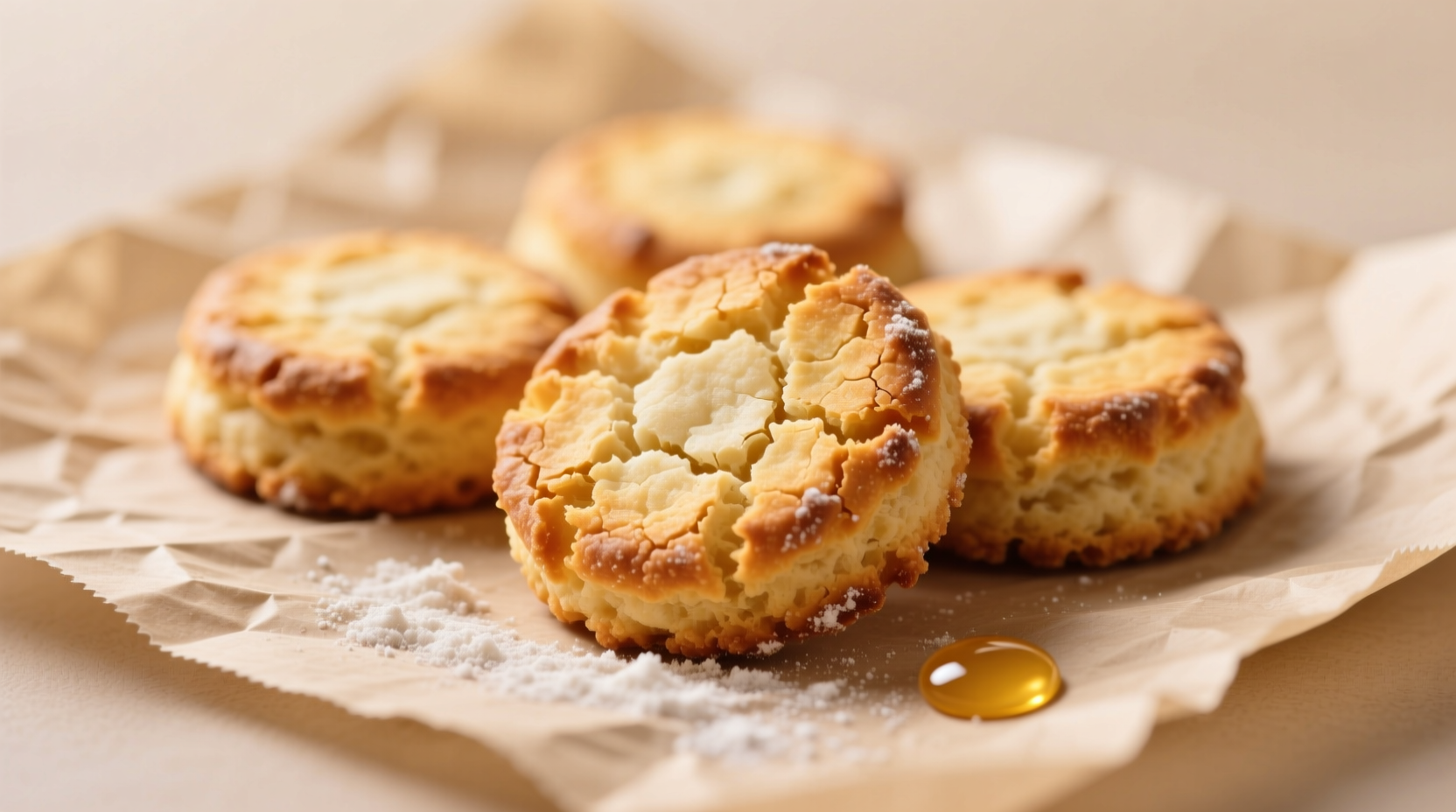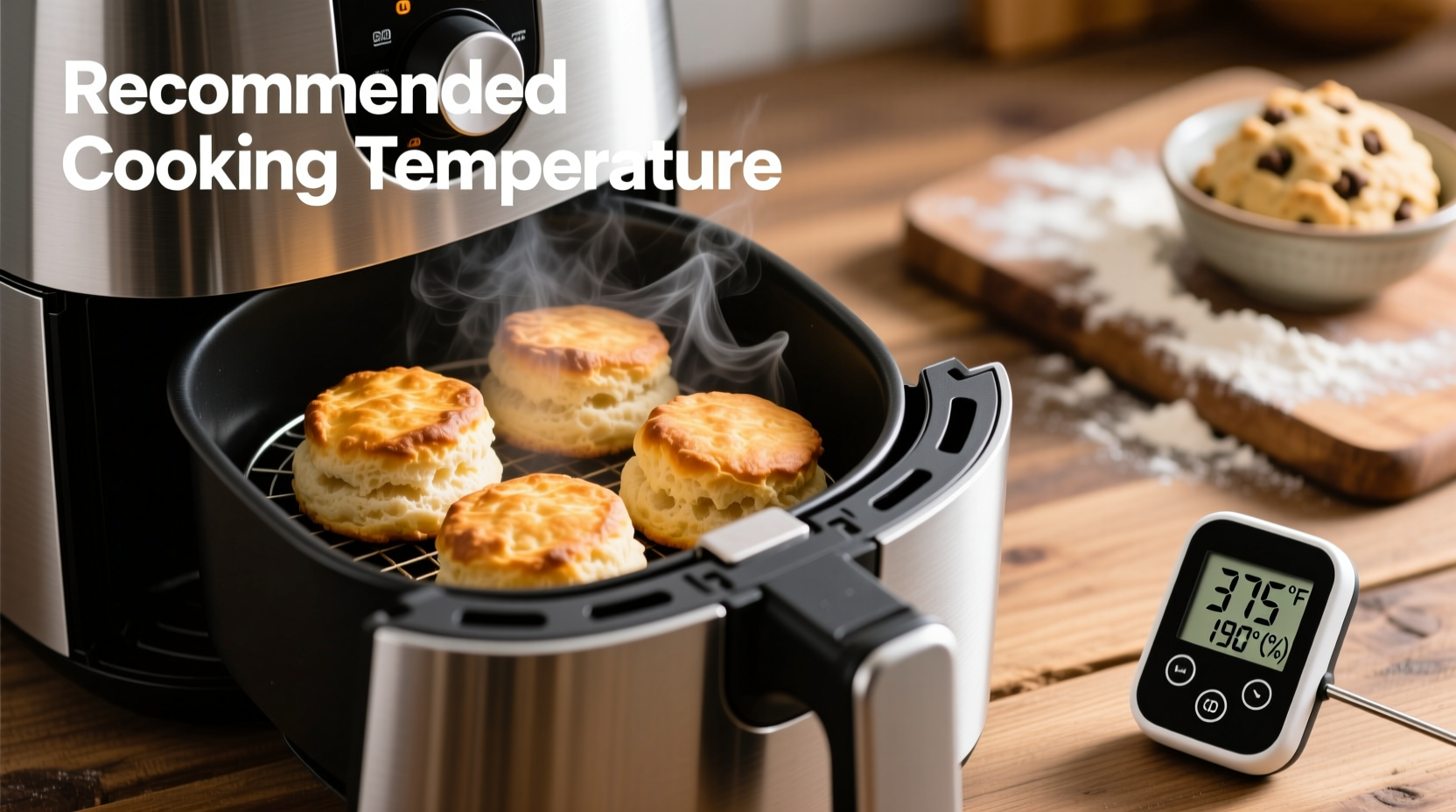Why Temperature Precision Matters for Air Fryer Biscuits
Air fryers circulate superheated air at high speeds, creating a unique cooking environment that demands precise temperature control. Unlike conventional ovens where heat radiates from the sides, air fryers deliver direct, intense heat from above and below. Cooking biscuits at the optimal 350-375°F range achieves three critical results:
- Perfect Maillard reaction - Creates that desirable golden-brown crust without burning
- Optimal rise - Allows baking powder to activate fully before the exterior sets
- Moisture retention - Prevents biscuits from drying out in the circulating hot air

Step-by-Step Biscuit Cooking Guide
Follow these professional-tested steps for consistently perfect air fryer biscuits:
Preparation Essentials
- Preheat your air fryer to 360°F (182°C) for 3-5 minutes - this critical step ensures immediate cooking upon insertion
- Space biscuits at least 1 inch apart on the basket floor or tray
- Line with parchment paper to prevent sticking without blocking airflow
- Lightly brush tops with milk or melted butter for enhanced browning
Cooking Process
- Place prepared biscuits in preheated air fryer
- Cook at 360°F for 8-12 minutes (time varies by size and model)
- Rotate basket halfway through cooking for even browning
- Check for doneness at 8 minutes - internal temperature should reach 200°F
- Remove immediately when golden brown to prevent overcooking
Air Fryer vs. Traditional Oven: Temperature Comparison
| Cooking Method | Temperature | Cooking Time | Key Differences |
|---|---|---|---|
| Air Fryer | 350-375°F | 8-12 minutes | Faster cooking, more even browning, crispier exterior |
| Conventional Oven | 425-450°F | 12-15 minutes | Slower rise, softer exterior, requires baking sheet rotation |
Troubleshooting Common Biscuit Issues
Even with the right temperature, problems can occur. Here's how to fix them:
Burnt Bottoms, Raw Tops
This common issue happens when temperature is too high. Solution: Reduce temperature to 350°F and place biscuits on a raised rack if available. The USDA Food Safety and Inspection Service confirms that proper temperature control prevents uneven cooking in rapid-air appliances (fsis.usda.gov/air-fryer-safety).
Dense, Heavy Biscuits
Indicates insufficient rise due to low temperature. Solution: Increase to 375°F and ensure proper preheating. The American Institute of Baking notes that optimal leavening occurs between 350-375°F for quick breads in convection environments.
Adapting for Different Biscuit Types
Not all biscuits cook identically. Adjustments by type:
- Buttermilk biscuits: 360°F for 9-11 minutes (higher fat content requires precise temperature)
- Cheese biscuits: 350°F for 10-12 minutes (cheese browns faster at higher temps)
- Sweet biscuits: 350°F for 8-10 minutes (sugar content increases browning speed)
- Larger biscuits (2.5" diameter): 350°F for 10-12 minutes with 1-minute rest inside closed air fryer
Pro Tips from Professional Kitchens
Professional bakers recommend these advanced techniques:
- Chill biscuits before cooking - Cold dough creates better rise as the exterior sets before interior heats
- Use an instant-read thermometer - Target 200°F internal temperature for perfect doneness
- Adjust for basket size - Smaller air fryers (3-4qt) may require 350°F while larger models (5+qt) work best at 370°F
- Don't overcrowd - Maximum 6 standard biscuits in a 5.8qt basket for proper air circulation
Storage and Reheating Guidelines
Properly stored air fryer biscuits maintain quality for up to 3 days:
- Cool completely on wire rack before storing
- Store in airtight container with paper towel to absorb moisture
- Reheat at 300°F for 3-4 minutes to restore crispness without drying
- Freeze unbaked portions for up to 3 months - cook from frozen adding 2-3 minutes
Frequently Asked Questions
Can I cook frozen biscuits in an air fryer?
Yes, cook frozen biscuits at 350°F for 10-14 minutes (add 2-4 minutes to standard time). No need to thaw first - the circulating hot air cooks them evenly from frozen. Check at 10 minutes as cooking times vary by brand.
Why are my air fryer biscuits burning on the bottom?
Bottom burning typically indicates excessive heat intensity. Reduce temperature to 350°F, use a parchment liner, and ensure proper spacing between biscuits. Some models benefit from placing biscuits on a raised rack to distance them from the heating element.
Do I need to preheat my air fryer for biscuits?
Yes, preheating for 3-5 minutes is essential for proper biscuit rise. The immediate exposure to correct temperature activates the leavening agents properly. Skipping preheating often results in dense, flat biscuits that don't achieve full rise.
How do I know when biscuits are done in an air fryer?
Biscuits are done when golden brown on top and bottom, with internal temperature reaching 200°F. They should feel light when lifted and sound hollow when tapped. For accurate results, use an instant-read thermometer rather than relying solely on appearance.











 浙公网安备
33010002000092号
浙公网安备
33010002000092号 浙B2-20120091-4
浙B2-20120091-4